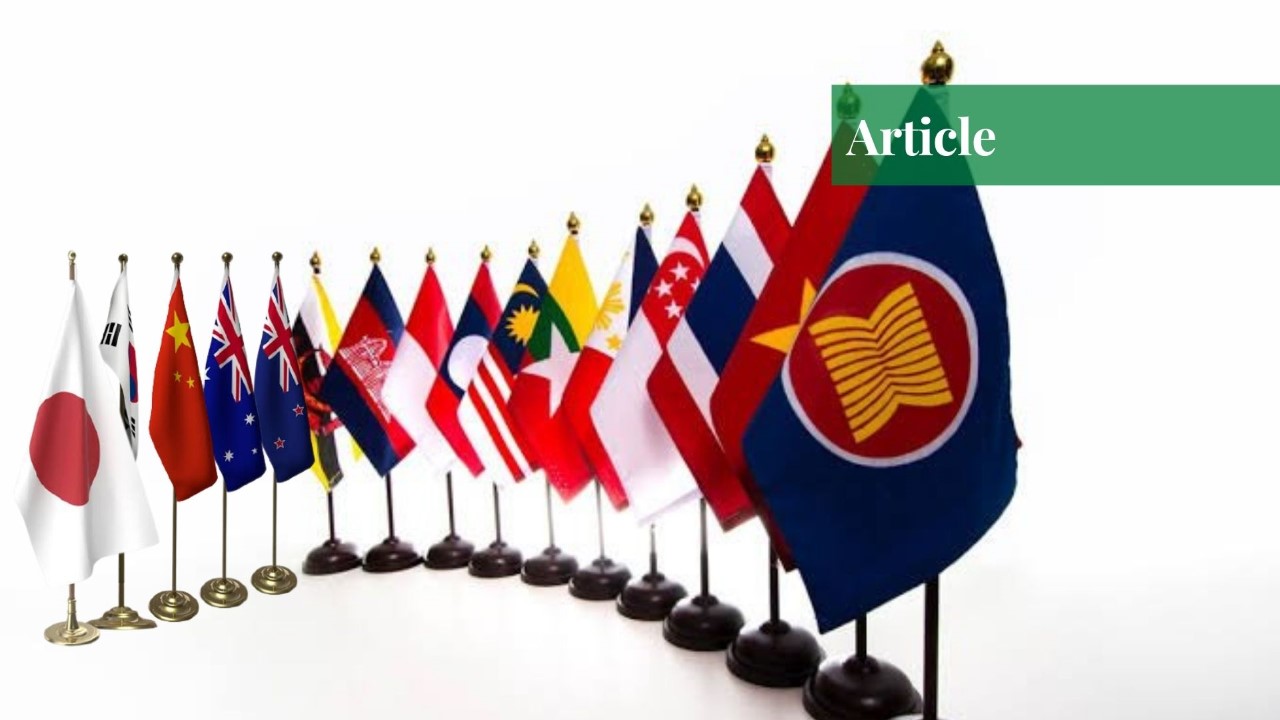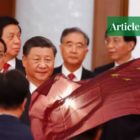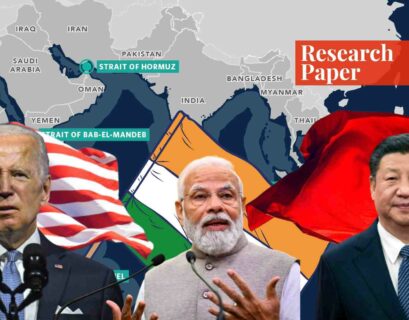Ms Saira Javaid Cheema has a bachelor's degree in Social Sciences with a major in International Relations and Politics from the University of Lahore.
The Asia-Pacific Enters the Fray
The Regional Comprehensive Economic Partnership (RCEP) was signed virtually in Hanoi at the behest of 15 countries in 2020. The agreement between member states of ASEAN and its free trade agreement (FTA) partners comprises about 30% of the world’s GDP, making it the world’s largest trade bloc.
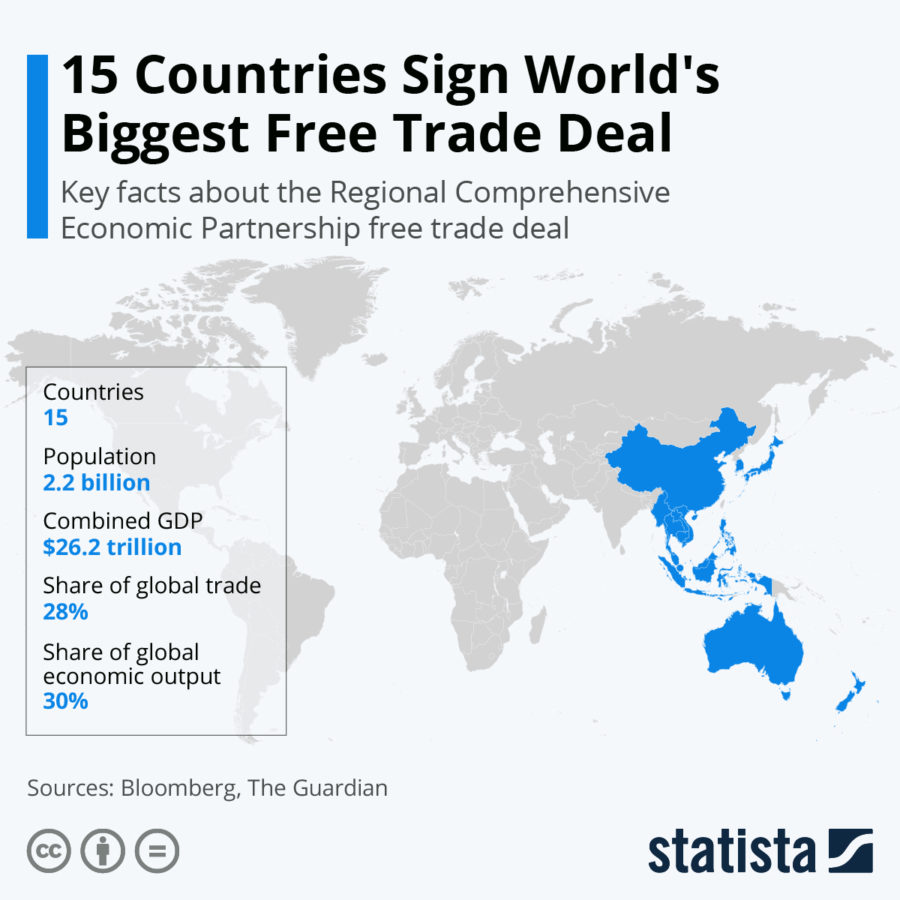
These member states and their FTA partners include Brunei, Cambodia, Indonesia, Laos, Malaysia, Myanmar, the Philippines, Singapore, Thailand, Vietnam, China, Japan, South Korea, Australia, and New Zealand. With the determination of an integrated market and a protagonist of globalization, RCEP has made it easier for trade and services to flourish smoothly in the region by reducing tariffs. All the signatories seem ready to garner the premiums of such an economic integration.
India’s Ostracized Exit
The clash at Galway Valley between the two neighboring states, India and China, resulted in India’s opt-out of the Regional Comprehensive Economic Partnership on November 4th, 2019. Despite countless negotiations, the economic agreement failed to address Delhi’s concerns over the agricultural and services sectors.
The current global situation due to Covid-19 enabled Indians to take over massive deficits, particularly in China. One of the reasons why India opted to leave the partnership was it feared that there was “inadequate” protection against surges in imports.
An Opening
China’s core geostrategic interests entail its influence over the South and East China seas. In order to do that, China has been yanking the South-East Asian states away from the US using both carrot and stick. The long game played by a majority of Han strategists through diplomacy has granted them potent trade and defense. The Trans-Pacific Partnership (TPP) became the crux for US foreign policy back in 2016.
“Before President Donald Trump pulled the United States away from the agreement in 2017, the TPP was set to become the world’s largest free trade deal, covering 40 percent of the global economy”. Thus, the US negligent withdrawal provided Beijing with a juncture for riveting eyes on the empty ground left by its biggest competitor.
A Rude Awakening
The unfolding member countries of RECP are to get off on economic linkages through the partnership. Today, most of us are familiar with the escalating economic tensions between the world’s two largest economies, China and the United States. Donald Trump withdrew from TPP, which provided a vacuum for Beijing to stand tall in the region.
Through effective diplomacy in the Regional Comprehensive Economic Partnership, the Chinese are making a geopolitical win and way forward in East Asia. However, “The Great United States of America” looks to have quite a great deal of trouble in the future. The Economic Partnership between ASEAN + 6 FTA countries advocates globalization instead of protectionism which worries the US.
Countries like Myanmar, Laos, and Cambodia could stand against expensive American goods and services in East Asia. The Regional Comprehensive Economic Partnership lowers about 80% to 90% of tariffs on goods and services, promoting multilateralism in Asia.
According to Kawasaki, the simulated economic impacts on GDP growth would suppress the US economy by 0.16%. The majority of US strategic allies in East Asia are members of RECP. Economic liberalization and interdependence on China could weaken American hegemony in the Indo-Pacific region.
The Regional Game Changer
China is the largest economy in the world which dominates the Indo-Pacific region. China’s GDP is expected to reach $15600 billion by the end of 2021, according to Trading Economics. The current GDP of Japan, on the other hand, is only $5200 billion. Sino-Japan relations have been in dismay throughout history, with the East China Sea being the bone of contention.
However, China is the largest market for Japan and the Chinese leaders consider “Japanese investment vital for the economic leverage” and that Japan is the “most desired partner”. In 2019, Beijing had to face conjectural accusations with the advent of Covid-19. Due to that, the world had to pause all its economic activities with China.
The Regional Comprehensive Economic Partnership will chip in to remedy the loss and take growth to new heights through more supply chains among member states. According to a statistical study, “the income of China will increase by 2.5 percent. The trade increase of Korea will be $8bn, and its income will increase by 0.6 percent. In terms of welfare, China will gain $214bn and Korea will gain $23~35bn, taking 2~3 percent of Korea’s GDP. Also, the reduction of behind-the-border barriers presents very significant effects”.
A Mega-Regional Free Trade Agreement
The EU we know today is an outcome of a single integrated market. “The single market has contributed to economic growth in the EU average 2.0–2.5% last over 20 years”. Similarly, many scholars believe that the RCEP could be a mega-regional free trade agreement in history.
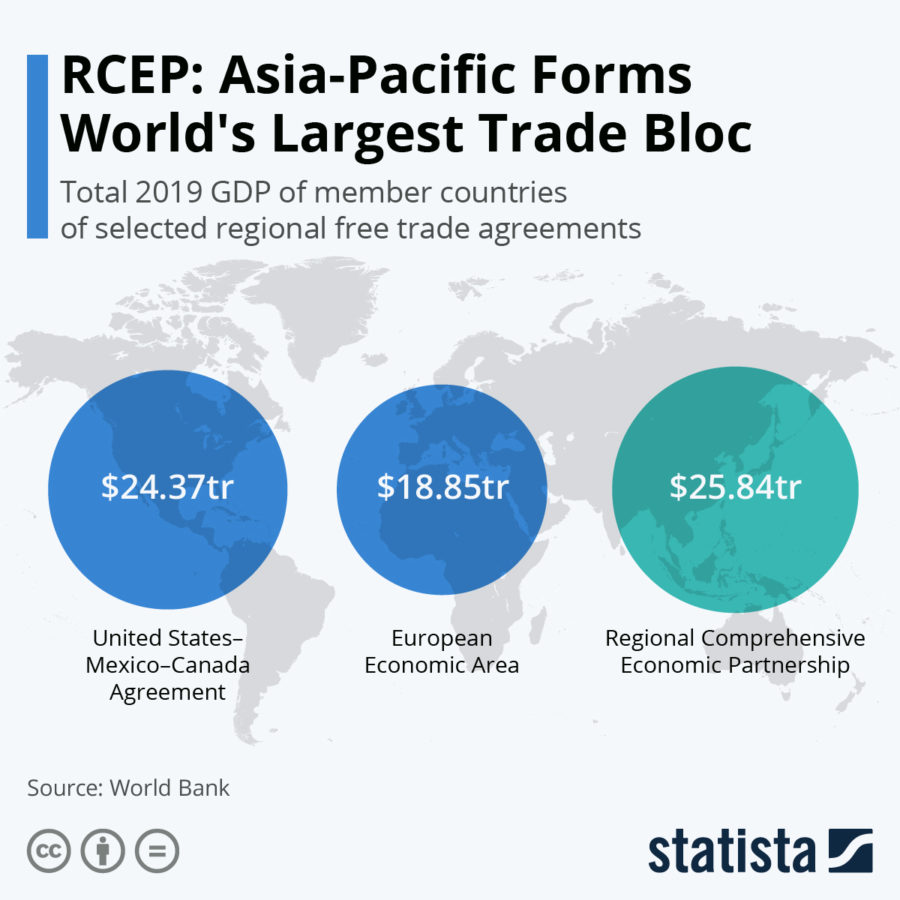
The South-East Asian trade bloc comprises the world’s largest economies such as China, Japan, Korea, and Australia. The regional partnership in South-East Asia would seek more political objectives than economic ones. It is also a platform where ASEAN states could get a chance to enhance their cordial relations with Non-ASEAN states.
Conclusion
The call for Asian integration through RCEP is a new road towards a mega-regional FTA, which might provoke the American administration to reconsider its policy towards TPP. The economic partnership in South-East Asia would be a source for member states in recovering their economies due to the pandemic. China’s role in the region is paramount, creating substantial supply chains in Indo-Pacific.
If you want to submit your articles and/or research papers, please check the Submissions page.
The views and opinions expressed in this article/paper are the author’s own and do not necessarily reflect the editorial position of Paradigm Shift.
